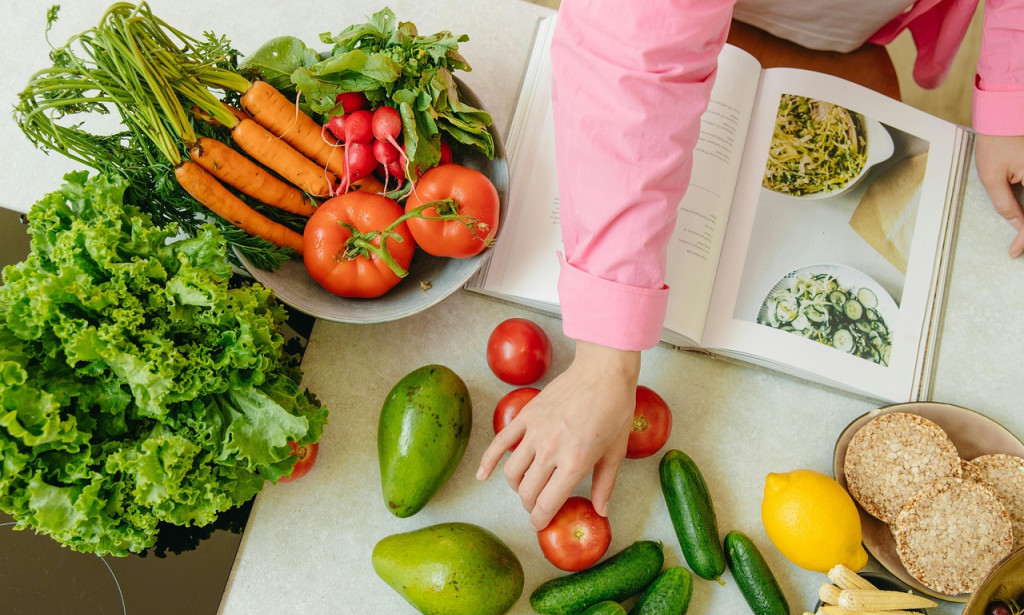What Is an Anti-Inflammatory Diet?
An anti-inflammatory diet focuses on whole, nutrient-dense foods that are rich in antioxidants, healthy fats, fiber, vitamins, and minerals. These nutrients help the body neutralize harmful free radicals, support immune function, and keep inflammation in check.
Key characteristics of an anti-inflammatory diet:
-
Emphasizes fruits, vegetables, whole grains, nuts, seeds, and fatty fish
-
Minimizes processed foods, refined carbs, sugar, and trans fats
-
Encourages hydration and natural herbs/spices
Let’s dive into the anti-inflammatory superstars you should be adding to your plate.
1. Berries (Blueberries, Strawberries, Raspberries)
Berries are small but mighty. They’re loaded with antioxidants like anthocyanins, which help reduce inflammation and protect your cells from oxidative stress. Berries also support gut health—key for keeping systemic inflammation under control.
How to enjoy them:
-
Add to smoothies, yogurt, or oatmeal
-
Freeze for a cool snack
-
Use as a natural sweetener in desserts
2. Leafy Greens (Spinach, Kale, Swiss Chard)
Dark leafy greens are packed with vitamins A, C, and K, as well as magnesium and polyphenols—all of which help fight inflammation at the cellular level.
Spinach, for example, contains lutein, which supports eye health and reduces inflammatory markers.
How to enjoy them:
-
Toss into salads or stir-fries
-
Blend into green smoothies
-
Sauté with garlic and olive oil for a simple side
3. Fatty Fish (Salmon, Sardines, Mackerel)
Fatty fish are among the best sources of omega-3 fatty acids, particularly EPA and DHA, which are known to reduce levels of pro-inflammatory cytokines in the body.
Studies show that regular consumption of omega-3-rich fish can help manage autoimmune diseases, reduce heart disease risk, and improve brain function.
How to enjoy them:
-
Grill or bake with lemon and herbs
-
Add to salads or grain bowls
-
Enjoy canned sardines or mackerel as a protein-packed snack
4. Nuts and Seeds (Walnuts, Chia Seeds, Flaxseeds)
Nuts and seeds offer a powerful mix of healthy fats, fiber, protein, and antioxidants. Walnuts, for example, are especially high in alpha-linolenic acid (ALA), a plant-based omega-3.
Chia and flaxseeds are also excellent sources of ALA, plus fiber to support gut health.
How to enjoy them:
-
Sprinkle on yogurt, cereal, or smoothies
-
Add ground flax to baked goods
-
Make chia pudding or nut butter energy bites
-
-
5. Tomatoes
Tomatoes are rich in lycopene, an antioxidant that’s particularly effective at reducing inflammation in the lungs and throughout the body. Lycopene becomes more bioavailable when tomatoes are cooked, so tomato sauces and soups are excellent choices.
How to enjoy them:
-
Add fresh slices to sandwiches and salads
-
Cook into pasta sauces or soups
-
Roast with garlic and olive oil for a flavorful side
6. Garlic and Onions
These pungent staples contain sulfur compounds that enhance the immune response and reduce inflammation. Garlic’s compound allicin is known for its antibacterial, antiviral, and anti-inflammatory effects.
How to enjoy them:
-
Use raw in dressings and dips for maximum potency
-
Sauté or roast to mellow the flavor
-
Add to soups, stews, and sauces
7. Turmeric
Turmeric is the golden spice that gives curry its vibrant color—and it's famous for its active compound curcumin, which has strong anti-inflammatory and antioxidant properties.
Curcumin can be hard for the body to absorb, but pairing it with black pepper (which contains piperine) boosts bioavailability significantly.
How to enjoy it:
-
Add to soups, stews, and curries
-
Blend into smoothies or golden milk lattes
-
Take as a supplement with your doctor’s guidance
8. Green Tea
Green tea is loaded with catechins, particularly EGCG, which reduce inflammation and help fight cell damage. Drinking green tea regularly may reduce the risk of heart disease, cancer, and neurodegenerative conditions.
How to enjoy it:
-
Brew hot or iced with lemon
-
Matcha (powdered green tea) is a more concentrated form
-
Avoid adding sugar to maximize its benefits
9. Avocados
Avocados are high in monounsaturated fats, potassium, and fiber—all of which play a role in lowering inflammation. They also contain carotenoids and tocopherols (forms of vitamin E) with antioxidant effects.
One study found that people who ate avocado with a hamburger had less inflammation than those who ate the burger alone.
How to enjoy them:
-
Add to toast, salads, or wraps
-
Blend into smoothies for creaminess
-
Use in dressings or dips like guacamole
10. Colorful Veggies (Carrots, Peppers, Beets)
Vibrantly colored vegetables are high in phytonutrients, which are plant compounds that help reduce inflammation. Carrots and bell peppers are rich in beta-carotene, while beets contain betalains, which support detoxification.
How to enjoy them:
-
Roast with olive oil and herbs
-
Spiralize into noodles
-
Add to stir-fries and soups
Foods that limit
while eating more anti-inflammatory foods are important and it is important to reduce those that contribute to inflammation:
Refined sugars (soda, candies, pastries)
Processed meat (bacon, sausage)
- Processed foods containing additional pieces and preservatives
can reduce them by 20-30% and replace them with whole food, leading to significant improvements in emotions.


You must be logged in to post a comment.